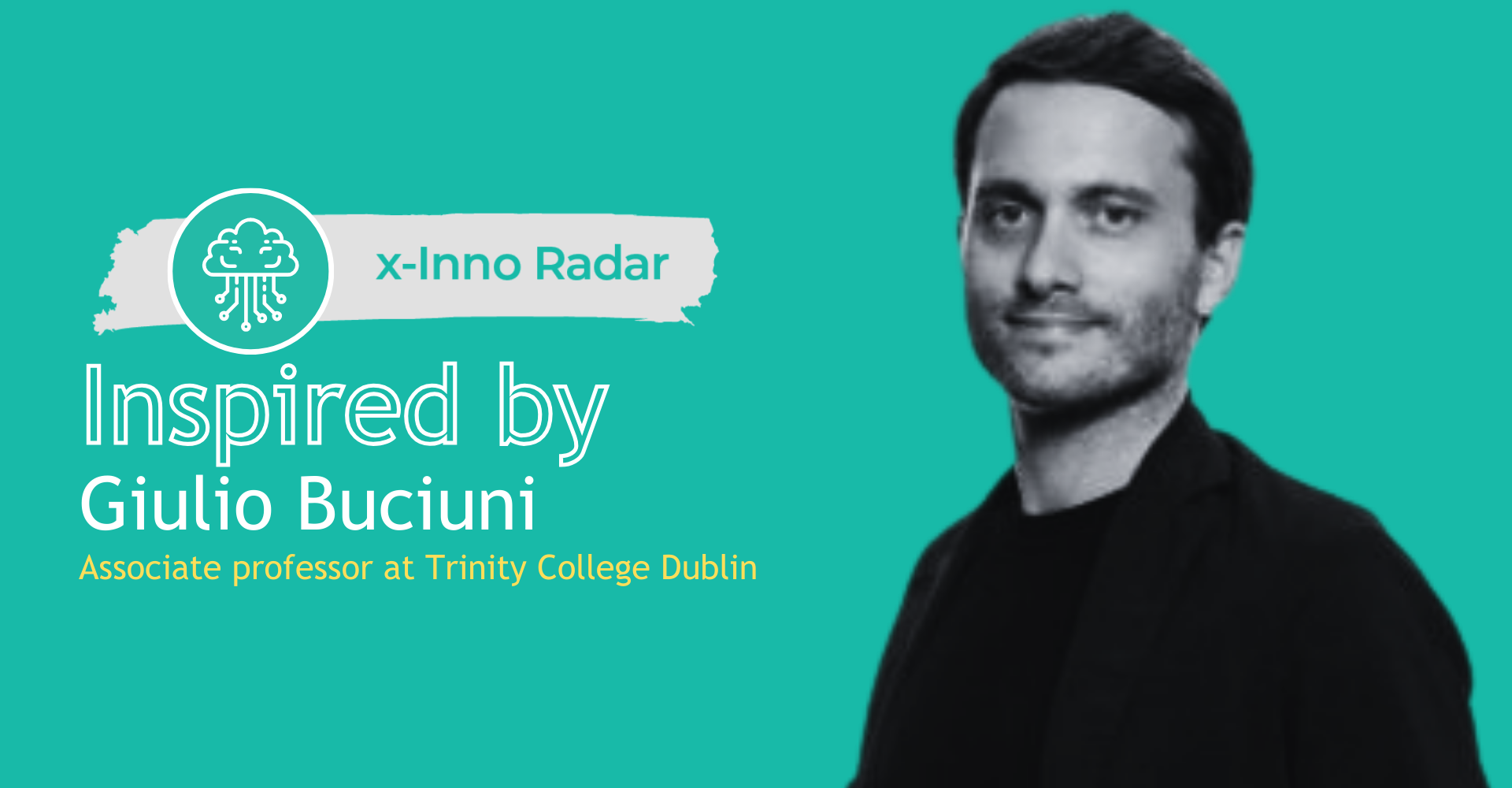His insights offered fresh perspectives for the x-Inno Radar partnership and sparked lively exchange among the participants.
Superstar cities and left-behind places
“Innovation in today’s economy tends to concentrate in a handful of ‘superstar cities’,” Giulio explained. These cities attract the most talent, funding and infrastructure – leaving second-tier and industrial regions struggling to reinvent themselves. These ‘left-behind places’ are still struggling with the consequences of post-industrial decline.
This global dynamic isn’t just economic – it has social, cultural and political implications too. Innovation, talent and even voting patterns are increasingly concentrated in the same places. “The geography map of innovation almost precisely overlaps with the map of political votes” And this gap between superstar cities and left-behind places is growing on the geography of innovation map. But that doesn’t mean the latter regions are without potential.
Galway: a surprising success story from Ireland’s Atlantic coast
Despite this trend, there is hope. Giulio brought a powerful example: Galway. With just 80,000 inhabitants, this medium sized city transformed over 40 years from one of the poorest regions into one of Europe’s most vibrant MedTech (?) innovation hubs. How? Not by chasing superstar status, but by building an ecosystem where hard and soft skills grow together.
- US multinational presence sparked the initial flame, bringing technical expertise and job opportunities.
- Local engineers trained at Galway’s university later left those companies to found their own startups.
- Entrepreneurship flourished, supported by public funding and community trust.
- Soft skills or entrepreneurial skills like leadership, risk-taking, persuasiveness and collaboration emerged as vital to the ecosystem’s growth.
And perhaps most importantly:
“Trust is the glue in every successful innovation ecosystem. Trust between companies, academia, investors and communities is what allows non-metropolitan regions to compete with global networks.”
A model for peripheral innovation?
Can the Galway model be applied elsewhere? “There is no one size to fit all to tackle this, but I’ve been working on solutions to generate innovation in non-superstar cities.”
The conditions you need for the Galway model are
- Globally connected firms, mid- to large-sized, must be present.
- Strong academic institutions need to feed the talent pipeline.
- Public and private finance must support bottom-up entrepreneurship.
To this, Giulio added a fourth: the soft skill element.
“When you add a creativity culture, real transformation becomes possible.”
Regions that succeed in retaining and attracting global talent are those that are open, diverse, and stimulating – culturally and economically. The rise of the creative class is the soft skill ingredient we need to add.
Building soft skills into regional innovation
As Giulio concluded, soft skills are essential for competitive regional ecosystems. They’re not a ‘nice to haves’, but enablers of trust, entrepreneurship and adaptability.
For x-Inno Radar, this is a strong validation of our mission: combining deep tech capabilities with future skills development to empower industrial regions from the inside out.
Whether in Galway, the Ruhr area or a Central European countryside – innovation does not belong to cities alone.
Join the conversation
x-Inno Radar will continue to explore and share these stories of transformation through soft skill development. Follow our journey, and connect with partners across Europe who are reimagining what’s possible in non-metropolitan industrial regions.
Let’s build the future of innovation from the ground up!
